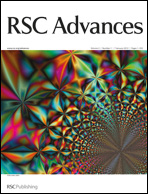Long lifetime, fault-tolerant freestanding actuators based on a silicone dielectric elastomer and self-clearing carbon nanotube compliant electrodes
Abstract
We explore the effect of pre-stretch and application of mechanical loads on a soft polydimethylsiloxane (PDMS) elastomer to obtain high linear strain freestanding dielectric elastomer actuators. It is shown that when the mechanical loads are properly applied, large linear actuation strains of 120% and work density of 0.5 J cm−3 can be obtained due to a transition from pure-biaxial to pure-uniaxial actuation conditions. Furthermore, we demonstrate that when coupled with single wall


 Please wait while we load your content...
Please wait while we load your content...